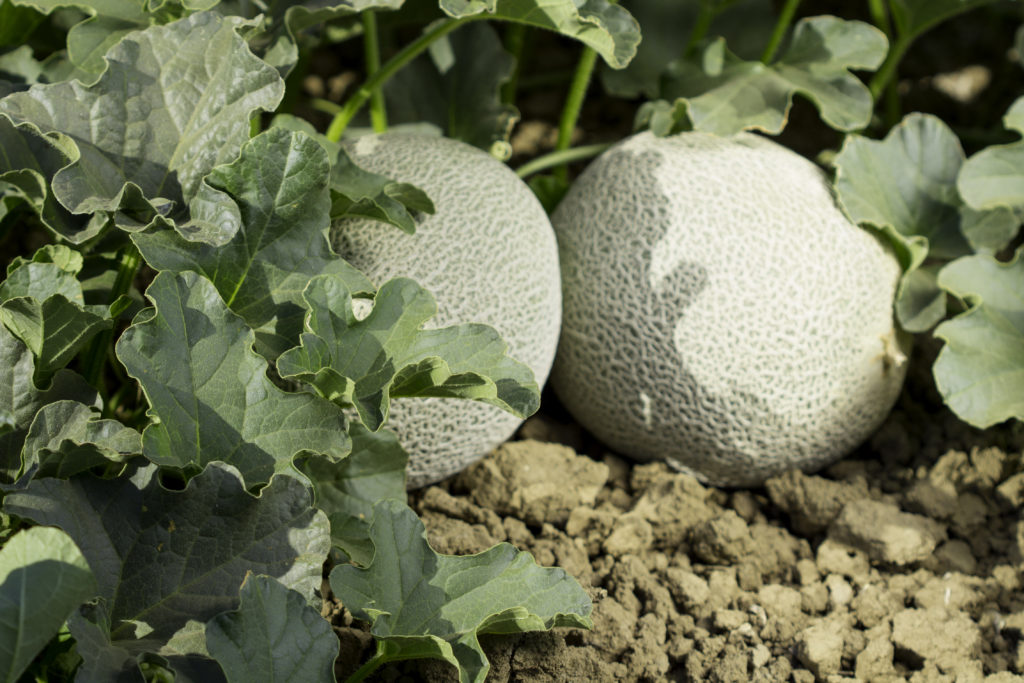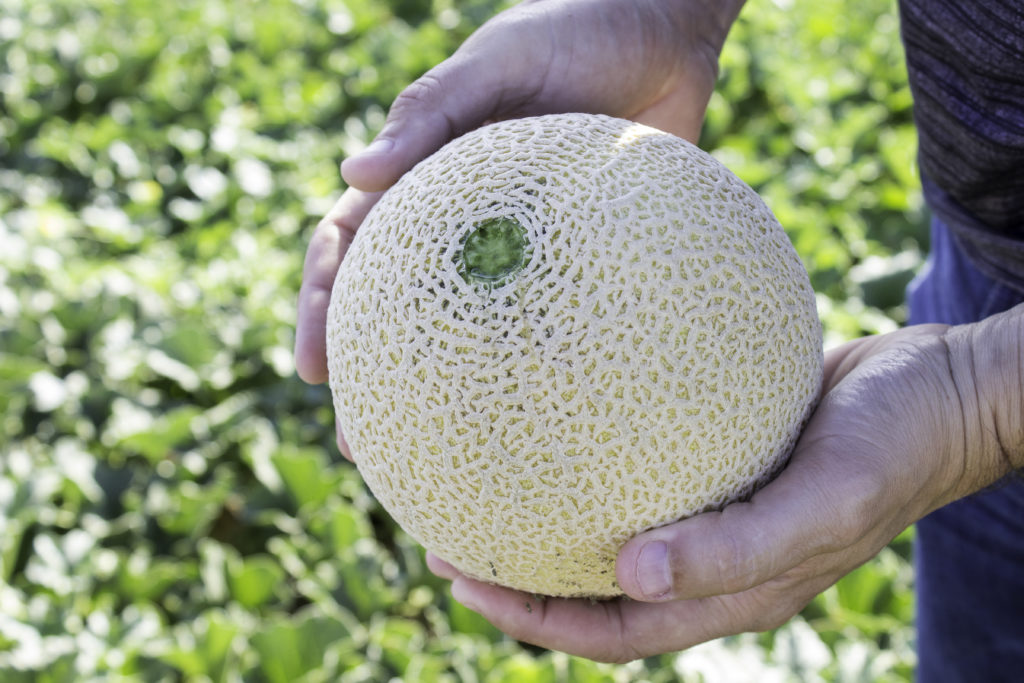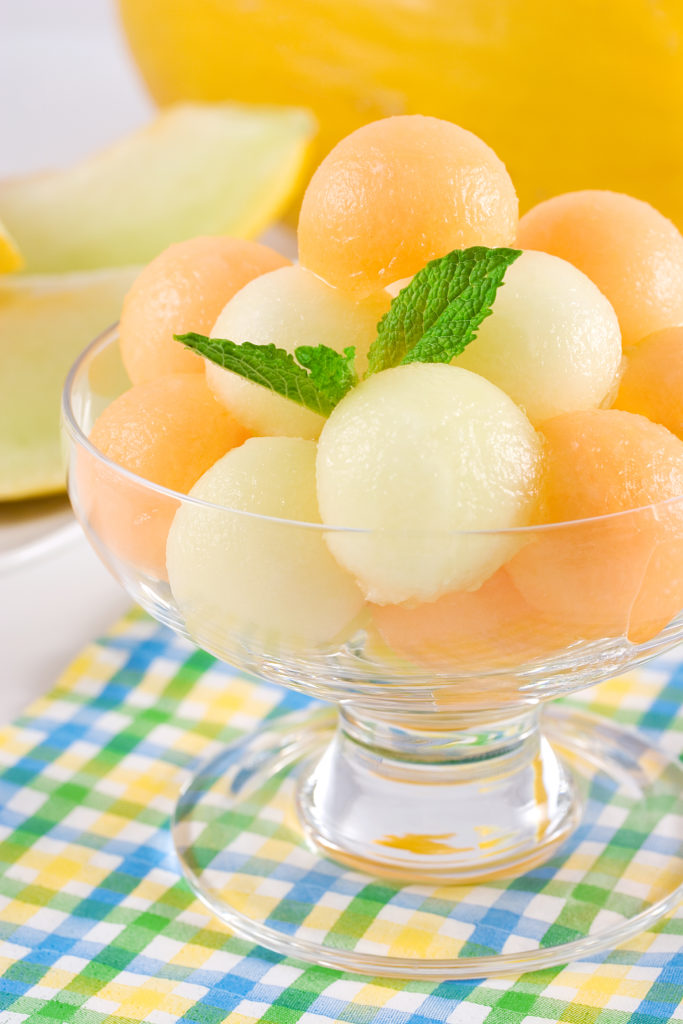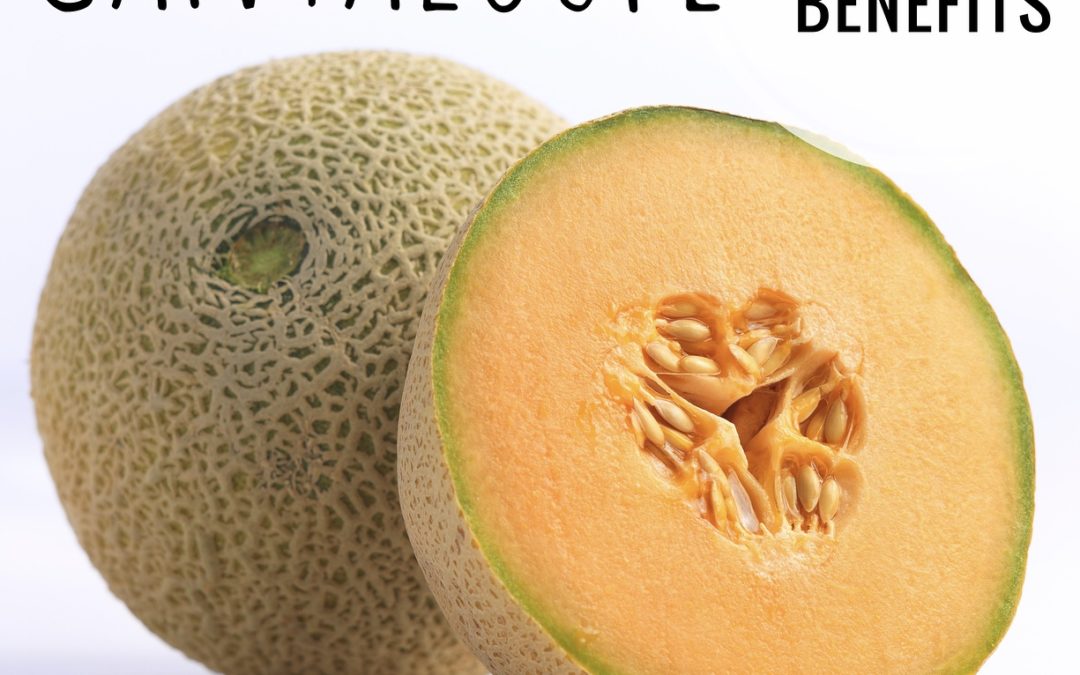
Say hello to the most common melon in the United States – the cantaloupe. The cantaloupe melon plant flourishes in hot, sunny climates with minimal rain – which explains why they’re not seen growing in Pennsylvania. Fortunately, they can be found in grocery stores year round. In the United States, they primarily come from California, Arizona, New Mexico, and Texas, with the peak season lasting from June through August. But come winter, even those sunny states aren’t able to produce enough cantaloupe melons, and our primary suppliers become Central American countries.

How To Choose and Keep the Best Cantaloupe Melon
Do not overlook the importance of picking the right cantaloupe. The melon’s flavor all depends on when it was picked. While the melon will become softer and juicer with time, the sugar content will not significantly increase following its harvest.
The cantaloupe should be:
- Fragrant and somewhat soft on the blossom end, where it once attached to the vine – these are qualities of a sweet, ripe melon
- Round or slightly oval and nearly symmetrical
- Heavy for its size. Typically, the heavier it is, the juicier it is (which means the more flavor it has)

Once you bring your melon home:
- Store the uncut cantaloupe at room temperature for up to 1 week
- Once cut, refrigerate the melon in an airtight container for up to 5 days
How To Prepare Cantaloupe Melon
Safety First
In 2011, cantaloupe from an American farm was found to be the source of a listeriosis outbreak – a food borne illness resulting from infection with Listeria monoctyogenes bacterium. Listeriosis is a serious food-bornbe illness that shouldn’t be taken lightly. It can result in severe illness, or even death, in individuals with a compromised immune system. Cantaloupe has also been linked to food borne illness from Salmonella and E. Coli.
That being said, don’t avoid this sweet melon. Just be sure to follow proper food safety techniques when preparing it. Washing cantaloupe before cutting is very important, becasue bacteria can get caught between the netted surface of the melon. Before cutting, use a vegetable brush and scrub the skin of the fruit under clean running water. Once cut, store in the refrigerator. You don’t want the melon sitting at room temperature for any longer than 2 hours. And, remember to follow the proper storage guidelines listed above.

How to cut the melon:
- Cut off the blossom end, and the end opposite the blossom (the melon should now have two flat surfaces parallel to each other).
- Remove the rest of the outer surface by cutting along the curve from the top to the bottom. Try to remove as little of the orange flesh with the rind as possible while doing this.
- Once the surface has been removed, slice the melon in half.
- Scoop out the seeds with a small spoon.
- You can now dice the melon, cut it into wedges, or use a melon baller.
The Nutrition & Health Benefits of Cantaloupe
Now for my favorite topic – the nutrition and health benefits!

1 cup of cubed melon only has ~55 Calories (due to its high water content), ~1.5 g fiber and over 100% of your daily needs for Vitamin A. It’s also high in vitamin C and a very good source of potassium.
Vitamins A and C are both antioxidants that work to keep your body healthy. They help fight damage caused from free radicals. Vitamin C plays an important role in wound healing and iron absorption, while vitamin A is key for good vision.

Easy Ways to Enjoy Cantaloupe:
- Puree melon to make a favorite summer treats, like frozen homemade popsicles, fruit smoothies, or cold melon soup. Yum!
- Make a summertime salsa. Start by dicing cantaloupe, mango, red onion, pineapple, and peppers, then mix with fresh cilantro. Add a squeeze of lime juice and eat with baked chips. It makes a great topping for seafood, too.
- Cantaloupe also pairs well with savory flavors, such as prosciutto and cheeses (such as feta and mozzarella).
- Get fancy! Top ½ cantaloupe with a 1/4 c of frozen yogurt and a few berries or crushed walnuts.
- Cut the cantaloupe into cubes or wedges and enjoy them alone or with a sweet yogurt dip.
Tip: a squeeze of lemon or lime juice enhances the flavor of most melons, including cantaloupe.
Do you have a favorite way to enjoy cantaloupe?


 Hi, I’m Heather – a registered dietitian, busy mom, consultant, adventure junkie and travel addict who has mastered living healthy on the go. My blog is where I share simple recipes and healthy living tips to help and inspire others to live their best life.
Hi, I’m Heather – a registered dietitian, busy mom, consultant, adventure junkie and travel addict who has mastered living healthy on the go. My blog is where I share simple recipes and healthy living tips to help and inspire others to live their best life.